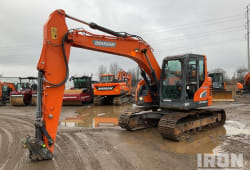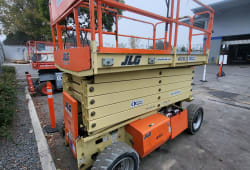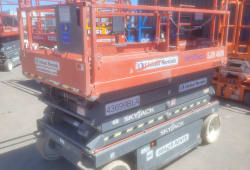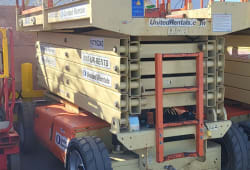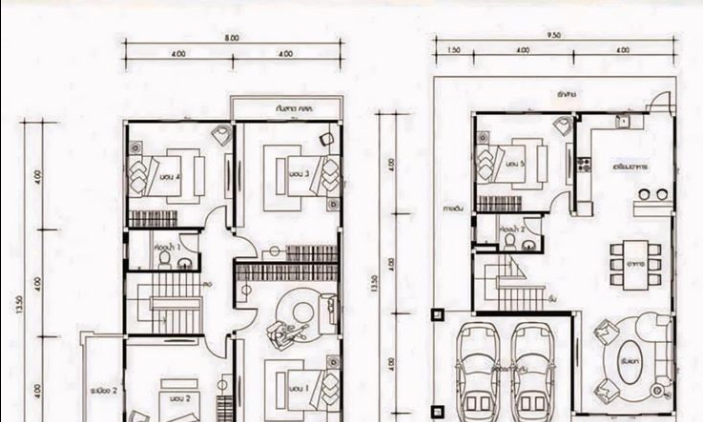Experience Modification Rate (EMR) in Construction: A Complete Guide
5 Min read
)
February 24, 2025
In the construction industry, safety and risk management play a crucial role in determining operational costs. One key metric that directly impacts workers' compensation insurance premiums is the Experience Modification Rate (EMR). But what exactly is EMR, and why does it matter for construction companies?
Understanding your Experience Modification Rate in construction is essential because it reflects your company's safety record compared to industry standards. A lower EMR can reduce insurance costs, improve profitability, and help businesses secure more contracts. In this guide, we’ll explore what EMR is, how it’s calculated, and how you can improve it.
What is Experience Modification Rate in Construction?
The Experience Modification Rate (EMR) is a numerical rating assigned to businesses based on their workers' compensation claim history. It compares a company's workers' compensation claims to others in the same industry.
An EMR of 1.0 is the industry average.
An EMR below 1.0 indicates a safer-than-average company, leading to lower insurance premiums.
An EMR above 1.0 suggests a higher-than-average claims history, resulting in higher insurance costs.
Why is EMR Important in Construction?
Insurance Costs: A higher workers' compensation experience modification rate means higher premiums, increasing overall expenses.
Project Bidding: Many general contractors and project owners require subcontractors to have an EMR below 1.0 to qualify for work.
Safety Reputation: A low EMR signals strong workplace safety practices, making your company more competitive.
How is the Experience Modification Rate Calculated?
:format(webp))
The Experience Modification Rate formula is based on three key factors:
Payroll Size: Larger payrolls mean a bigger impact on EMR calculations.
Industry Classification Code: EMR is adjusted based on the risk level of the industry.
Claims History: Past workers' compensation claims play the most significant role in determining EMR.
EMR Formula:
EMR = Actual Losses / Expected Losses
Actual Losses: The total cost of past workers' compensation claims.
Expected Losses: The amount insurers expect a company of similar size and industry to incur.
Example Calculation:
If a construction company has $150,000 in actual losses but was expected to have $200,000 in losses, the EMR would be:
EMR = $150,000 / $200,000 = 0.75 (which is below the industry average, leading to lower insurance costs)
Workers' Compensation Experience Modification Rate: Why It Matters
:format(webp))
The workers’ compensation experience modification rate directly affects insurance premiums. A high EMR can lead to increased costs, while a low EMR results in significant savings. Here’s how it impacts your business:
Lower EMR = Lower Insurance Costs-Reduced workers' compensation expenses improve profitability.
Higher EMR = Higher Costs & Lost Opportunities-Many contractors reject subcontractors with high EMRs due to safety concerns.
Competitive Advantage -A low EMR enhances credibility and helps win bids on major projects.
How to Lower Your Experience Modification Rate in Construction
If your Experience Modification Rate in construction is too high, these strategies can help you reduce it over time:
1. Implement a Strong Workplace Safety Program
Conduct regular safety training for employees.
Promote a culture of safety with clear policies and enforcement.
Encourage workers to report hazards immediately.
2. Reduce Workplace Injuries
Enforce proper use of personal protective equipment (PPE).
Ensure equipment is regularly inspected and maintained.
Use technology such as wearables and AI-powered monitoring systems.
3. Improve Claims Management
Investigate workplace injuries promptly to prevent fraudulent claims.
Work closely with medical providers to ensure proper treatment.
Implement a return-to-work program to help injured employees transition back safely.
4. Conduct Regular Safety Audits
Review past accidents and identify recurring patterns.
Make necessary safety improvements before incidents occur.
Use third-party safety consultants for unbiased evaluations.
5. Maintain Accurate Payroll and Classification Codes
Ensure employees are classified correctly under the appropriate workers’ comp categories.
Work with your insurance provider to confirm your rates are accurate.
Common Mistakes That Increase EMR in Construction
Many companies unknowingly raise their workers' compensation experience modification rate by making these mistakes:
Failing to Report Small Injuries Properly-Even minor incidents can impact EMR if not managed well.
Ignoring Return-to-Work Programs-Keeping injured workers out longer than necessary increases claim costs.
Poor Documentation-Inaccurate records can result in incorrect claims and higher EMR calculations.
Not Reviewing EMR Reports-Errors in claims data can go unnoticed, leading to inflated rates.
How to Monitor and Improve Your EMR Over Time
Tracking your Experience Modification Rate in construction should be an ongoing process. Here’s how to stay ahead:
Regularly review EMR reports to identify trends and discrepancies.
Work with insurance providers to ensure fair assessments and prevent overcharges.
Invest in ongoing safety training to prevent injuries before they happen.
Conclusion: The Long-Term Benefits of a Low EMR in Construction
A lower Experience Modification Rate offers several long-term benefits:
Lower insurance costs, freeing up capital for business growth.
Higher chances of winning contracts, as many clients prefer companies with a low EMR.
A safer, more productive workforce, reducing downtime and improving efficiency.
By proactively managing safety, improving claims handling, and ensuring proper classification, construction companies can reduce their EMR, save money, and enhance their reputation in the industry.
Final Tip:
If you're unsure about your workers' compensation experience modification rate, consult with your insurance provider or a risk management specialist to identify opportunities for improvement. A proactive approach can save your company thousands of dollars each year while creating a safer work environment.
Share Your Thoughts:
Have you successfully reduced your EMR? What strategies worked best for your construction company? Share your experiences in the comments below!




